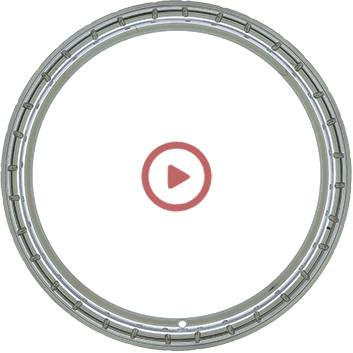The production method of Borrani rims differs per wheel type.
X-Ray rims are obtained by spinning, a proprietary Borrani technology where a 6082 aluminium alloy disc is progressively shaped by a spinning tool. The cold machining guarantees the maximum material homogeneity. A further heat treatment provides the required T6 hardening grade.
The S-Ray rims are obtained by low-pressure casting of AlSi7 aluminium alloy.
Sixty-four high-grade, AISI 304 stainless steel spokes are used for both the X-Ray and S-Ray range.
Assembly and centering are the crucial steps of the manufacturing process. No machine can replace the eyes, hands and experience of the Borrani craftsmen who ensure the wheels their perfect balance.








